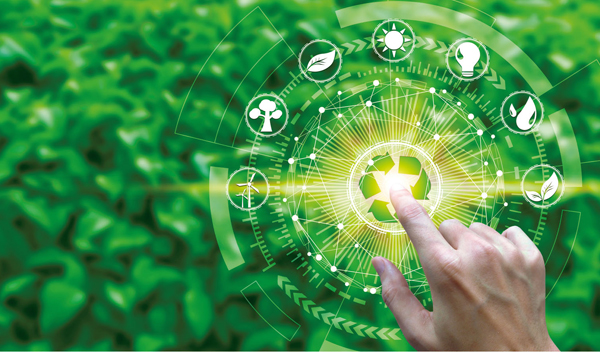AGRICULTURE SECTOR
AGRO’S DIGITAL REVOLUTION
Akila Wijerathna illustrates how IT could transform traditional agriculture
Traditional agriculture is predominantly rain fed and low yielding; and it lacks access to critical information, market facilitation and financial intermediation services. Digital technologies can address these challenges through personal devices such as mobile phones, tablets or PCs.

Embedded in broader stakeholder systems, IT can spur economic development and growth as it could help bridge critical knowledge gaps. Mobile technology is increasingly being adopted as the technology of choice to deliver IT services and solutions.
Digital technologies and analytics are transforming agriculture, making field operations in farms more insight driven and efficient. Digital based farm services are also helping to improve financial performance and boost yields.
These advancements can optimise key components of food systems, thereby increasing productivity, marketing and profitability while reducing environmental impacts. Virtually all stages of production – from refining crop genetics to managing logistics – have the potential to be digitally integrated in the near future.
This revolution will provide new means and methods for farmers to optimise resource management, improve crop quality and quantity, and remain productive in a changing climate.
For example, the Kenya Agricultural and Livestock Research Organization (KALRO) launched 14 agribusiness apps to aid farmers in decision making. This development comes as Africa’s agricultural sector is witnessing growth in technology driven applications such as drones, apps and geographic information systems.
These efforts enable farmers to access markets and improve farming practices, as well as predict the weather accurately. KALRO aims to provide farmers with research based information and ensure they have access to key information through IT tools.
Digital agriculture in a field can manage information at the ground and crop levels. It can provide real-time information on soil health, water availability, crop fertility needs, and pest and disease pressure while satellites and drones monitor weather changes, field conditions and crop health from above.
Complex software will analyse this constant influx of data and package it into usable information, delivering it to farmers’ mobile phones in real time. This provides precise guidance on what to do next – i.e. whether specific actions are needed to optimise crop growth or pest levels are reaching a threshold that will adversely affect crop yield or quality and so on.
The growth of IT has the potential to accelerate agricultural and rural development, enhance food security and reduce rural poverty in developing markets. While farmers and machinery remain key to the sector, technology is beginning to play a more significant role in uplifting communities.
This goes beyond basic computer training to using IT to improve the sustainability, efficiency and profitability of small-scale farming. IT can facilitate relationship building with trusted suppliers, purchasing aggregation for lower prices, access to cultivation information and best practices, and an overall reduction in labour costs and wastage.
Digital agriculture is the integration of new and advanced technologies into one system to enable stakeholders in the value chain to improve food production. By generating detailed insights into operations and the environment, it assists farmers to make data-based operational decisions to optimise yields and boost revenue while minimising expenses, crop failure and environmental impacts. Depending on the crop, overall profitability could also be improved.
Such a system can gather data more frequently and accurately, often combined with external sources. The resulting data is analysed and interpreted, so that farmers can make more informed as well as appropriate decisions. These can be implemented quickly with greater accuracy through robotics and advanced machinery with real-time feedback provided.
The technologies used include sensors, communication networks, unmanned aviation systems, AI, robotics and other advanced machinery, and they often draw on IoT principles. Each brings value from data collection to management and processing, as well as guidance and direction. This integrated system offers new insights that enhance decision making and implementation.
Digital agriculture has the potential to make farming more productive and consistent, and use time and resources more efficiently. This can present advantages for farmers and augurs well for wider social benefits globally. It also enables organisations to share information across traditional industry boundaries to open new disruptive opportunities.
There is potential to transform how we produce the world’s food; but the approach is still new, costs are high and details of long-term benefits are rarely available. Widespread adoption will require collaboration and consensus across the value chain on how to overcome these challenges.



